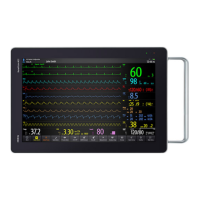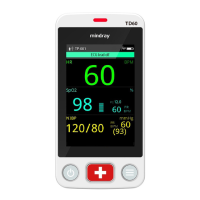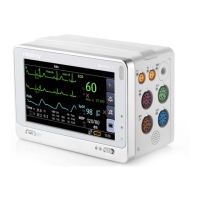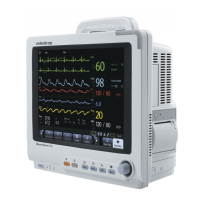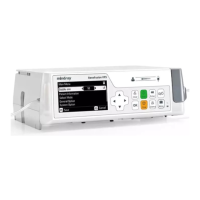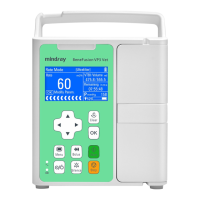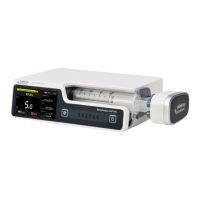BeneVision N1 Patient Monitor Operator’s Manual 6 - 1
6 Alarms
6.1 Alarm Introduction
This chapter describes alarm functions and alarm settings.
6.2 Alarm Safety Information
• A potential hazard can exist if different alarm presets and default configuration settings are used for
the same or similar equipment in the same care area, for example an intensive care unit or cardiac
operating room.
• If the monitor is connected to the central monitoring system (CMS) or other monitors, alarms can be
presented and controlled remotely. Remote suspension, inhibition, or reset of monitor alarms via
the CMS or other monitors may cause a potential hazard. For more information, see the operator’s
manuals for the CMS and the other monitors.
• The monitors in the care area may each have different alarm settings to suit different patients.
Always check that the alarm settings are appropriate for the patient before starting the monitoring.
Always make sure that necessary alarm limits are active and set according to the patient's clinical
condition.
• Setting alarm limits to extreme values may cause the alarm system to become ineffective. For
example, setting the SpO
2
high alarm limit to 100%, is equivalent to switching the alarm off.
• When the alarm sound is switched off, the monitor gives no alarm tones even if a new alarm occurs.
Be careful when considering to switch off the alarm sound. When the alarms are off or while alarm
audio is paused either temporarily or indefinitely, observe the patient frequently.
• When monitoring patients that are not continuously attended by a clinical operator, properly
configure the alarm system and adjust alarm settings as per the patient's condition.
• Do not rely exclusively on the audible alarm system for monitoring. Adjustment of alarm volume to a
low level may result in a hazard to the patient.
6.3 Understanding the Alarms
6.3.1 Alarm Categories
The monitor has two different types of alarms: physiological alarms and technical alarms.
■ Physiological alarms are triggered by patient measurement exceeding the parameter limits, or by an
abnormal patient conditions.
■ Technical alarms are triggered by an electrical, mechanical, connectivity, or other monitor abnormal
operation, or by failure of a sensor or component. Technical alarm conditions may also be caused when an
algorithm cannot classify or interpret the available data.
Apart from the physiological and technical alarms, the monitor can also prompt with some messages describing
the system status or patient status.

